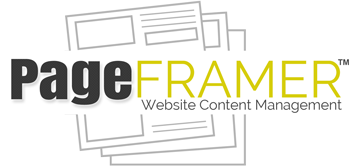Content Editor Section
The "Content" editor section may look intimidating, but if you can edit a Microsoft Word document, you can edit a PageFramer page using the TinyMCE editor (see Figure 1).

Figure 1
WYSIWYG Editor
The Content editor uses a WYSIWYG (What You See Is What You Get) editor interface. This interface works similar to document editors. Basically, if you have an understanding of how to edit a Word document, you should be able to edit a page inside of PageFramer.
The WYSIWYG editor has three rows. Each of the rows are broken down into sections. We will address each of these sections in order to give you more details about the editor functions. Each description below is described in order from left to right for each section.
Editing Source Code
If you have some basic knowledge of HTML, you can edit content via the source code by selecting the "Source Code" icon (see Figure 2, the highlighted "<>" sign icon in the second row within the editor).

Figure 2
Once the "<>" icon is selected, The Source Code Editor will appear in a pop-over on the page (See Figure 3).

Warning: When editing inside of the source code, never leave the curser inside of a list, such as a "ul" (unordered list), "ol" (ordered list), or "li" (list item) element. This will cause the "ul" element to create another "ul" element inside itself. To be safe, move the curser to appear at the end of a "div" (division) element or at the end of a "p" (paragraph) element.
